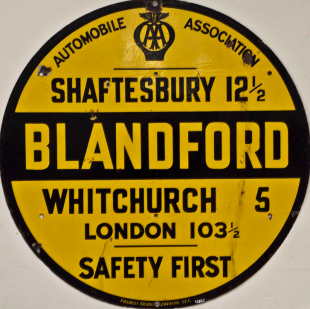You don’t have to be well-traveled to recognize the world contains many cultures and each culture has its own set of values and social norms. For example, I remember learning as a child that bearing the bottoms of your feet in certain cultures is considered offensive, while in others it is commonplace to burp after a meal to compliment the cook. The increasingly globalized economy is exposing those cultural differences in many different ways—one being the variation in safety standards from country to country.
NPR recently aired a story on the complications surrounding establishing international safety standards for vehicles. Car manufacturers in Europe and North American can’t seem to agree on what may seem like small issues. While debates among corporations might not seem surprising, the cultural roots of many of these disagreements is very interesting. Every culture has a different opinion on what is safe and what is not.
As we kick off Safety Week here at OpenSesame, let’s explore how cultural and social norms are shaping safety standards in countries across the world.
Automobile Industry
From Jeep, to Fiat, to Volkswagen, every automaker faces the challenge of developing multiple versions of the same car. This is a result of the varying safety standards that exist internationally. Automakers have tried to negotiate an harmonized system of regulations, but often these differences aren’t based on money or liability, but the unique attributes of that country.
For example, David Shepardson from Detroit News explains to NPR the differences in crash tests. While American crash tests will slam a car into a wall and then measure the impact on a dummy passenger, Europe goes one step farther. European companies not only crash test their vehicles for passenger safety, but for pedestrian crashes as well. European car hoods are held to a different standard and must be able to absorb a pedestrian head strike. Most likely this is a result of the smaller streets and heavy pedestrian traffic found in European cities, whereas the U.S. has more highways connecting suburbs to major cities.
Food Regulation
In the past few years, the debate over genetically-modified foods (often referred to as GMOs) has heated up between Europe and the U.S. Essentially, Europe has very strict regulations regarding GMOs and prevents many of them from coming into European Union (EU) countries. As a result, many U.S. food companies haven’t been able to expand.
While there are a number of reasons behind the EU’s reluctance to accept U.S. genetically-modified foods, research has suggested the issue stems from the cultural attitudes of European citizens. EU countries tend to be more skeptical of new technologies and favor traditional foods, as well as regional agricultural production patterns. The U.S., on the other hand, with our manifest destiny background, tends to embrace technological innovation and does not have the same concerns around processed foods.
Next time you travel to a foreign country, try taking a different kind of tour. Pay attention to warning signs, fine print on menus or brochures, as well as how your hotel lays out your fire escape plan. All of these things are influenced by what the local culture has defined as “safe” and it may be very different from what you are familiar with!






